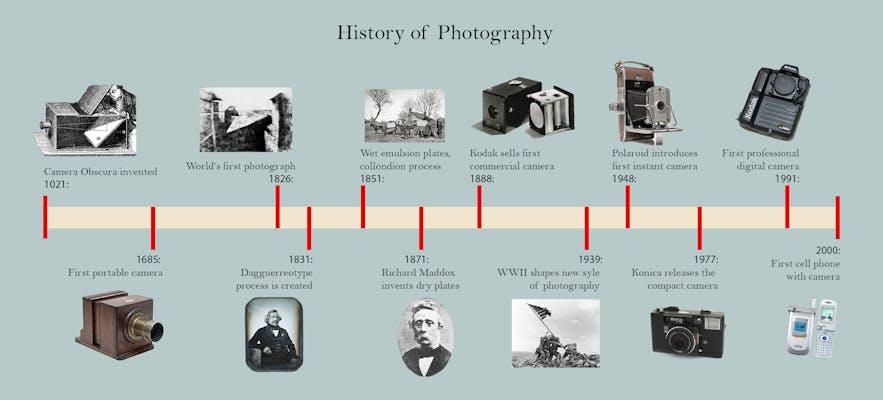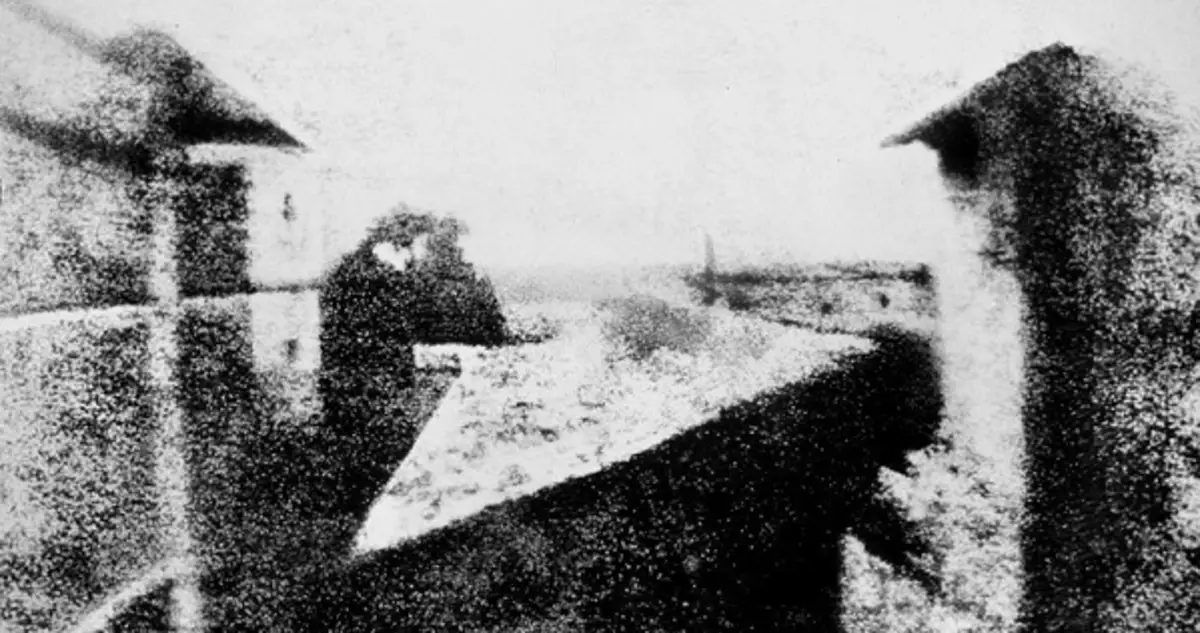
Photography, as we know it today, began in the late 1830s in France. Joseph Nicéphore Niépce used a portable camera obscura to expose a pewter plate coated with bitumen to light. This is the first recorded image that did not fade quickly.

Niépce called his process heliography, from the Greek helios meaning ‘drawing with the sun’. In 1826, using this process, Niépce took the earliest surviving ‘photograph’. The photo was taken from his window in his house in Chalons-sur-Saône which required an exposure of about 8 hours.
What was photography first used for?
At first, photography was either used as an aid in the work of an painter or followed the same principles the painters followed. The first publicly recognized portraits were usually portraits of one person, or family portraits.
Photography in WW2
Wartime photography became much more graphic in World War II. 37 print and photo journalists were killed in World War II, 112 were wounded, and 50 were taken prisoner. The casualty rate among wartime journalists was four times higher than among soldiers.

